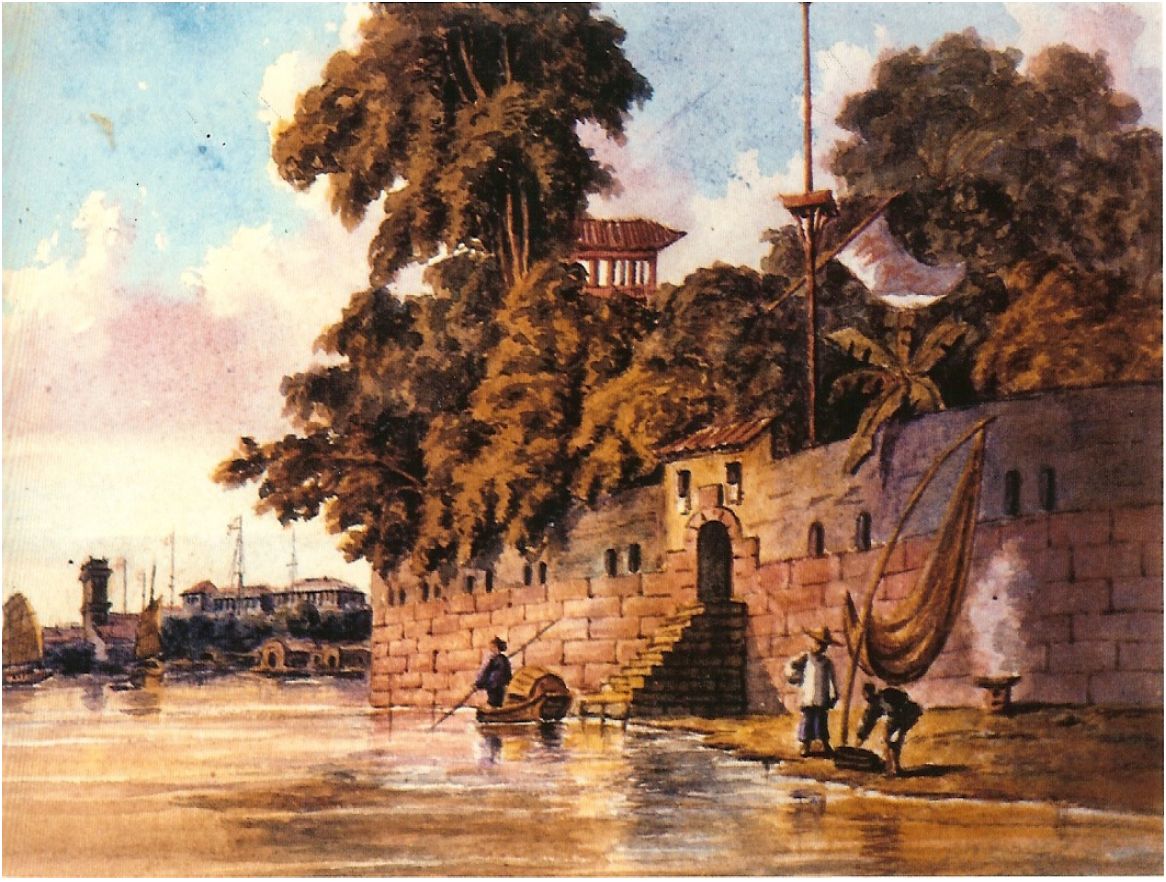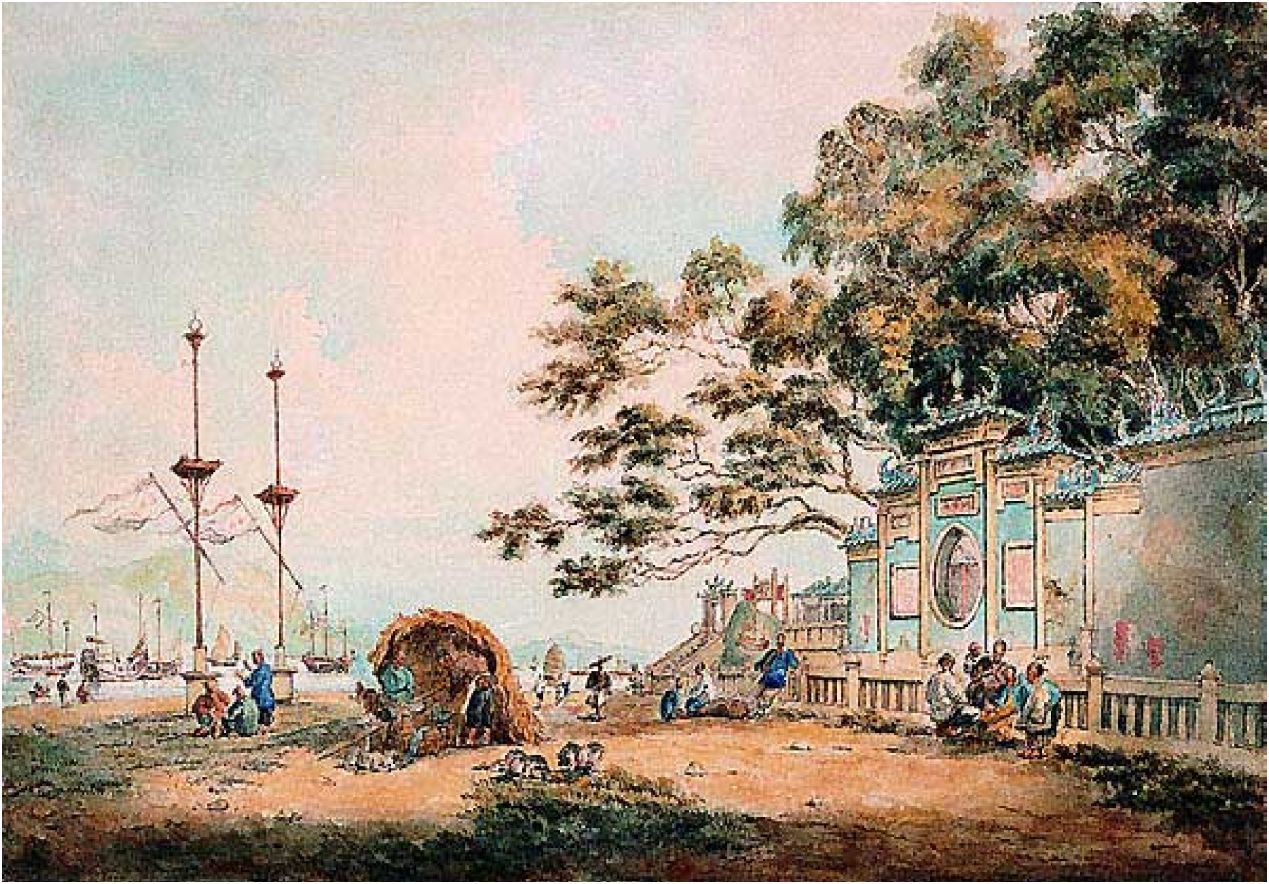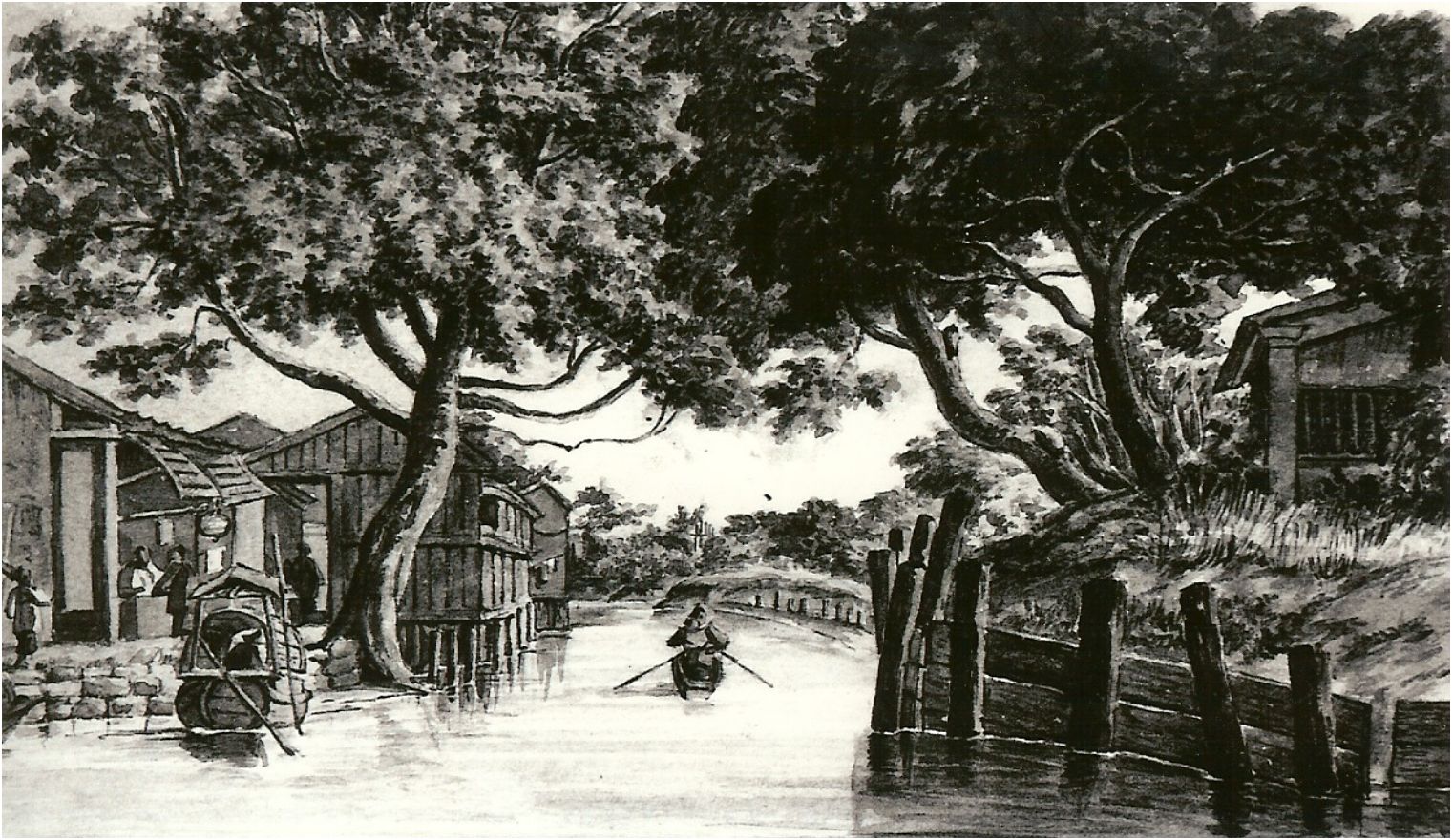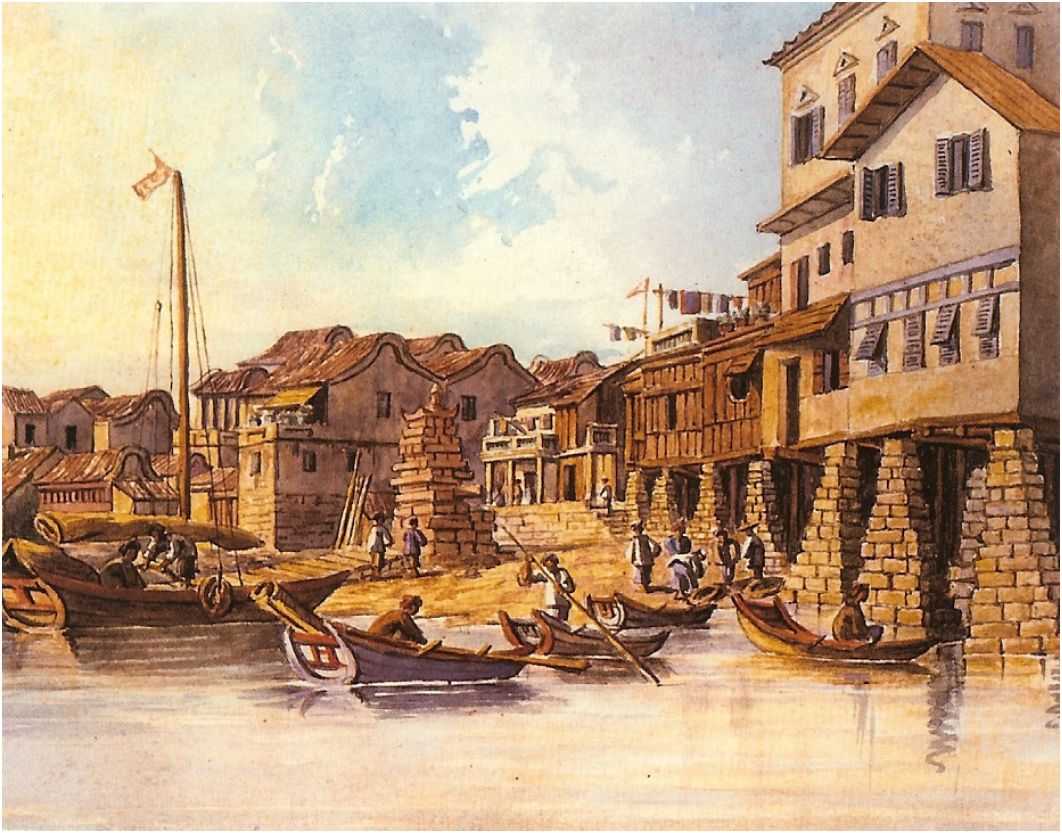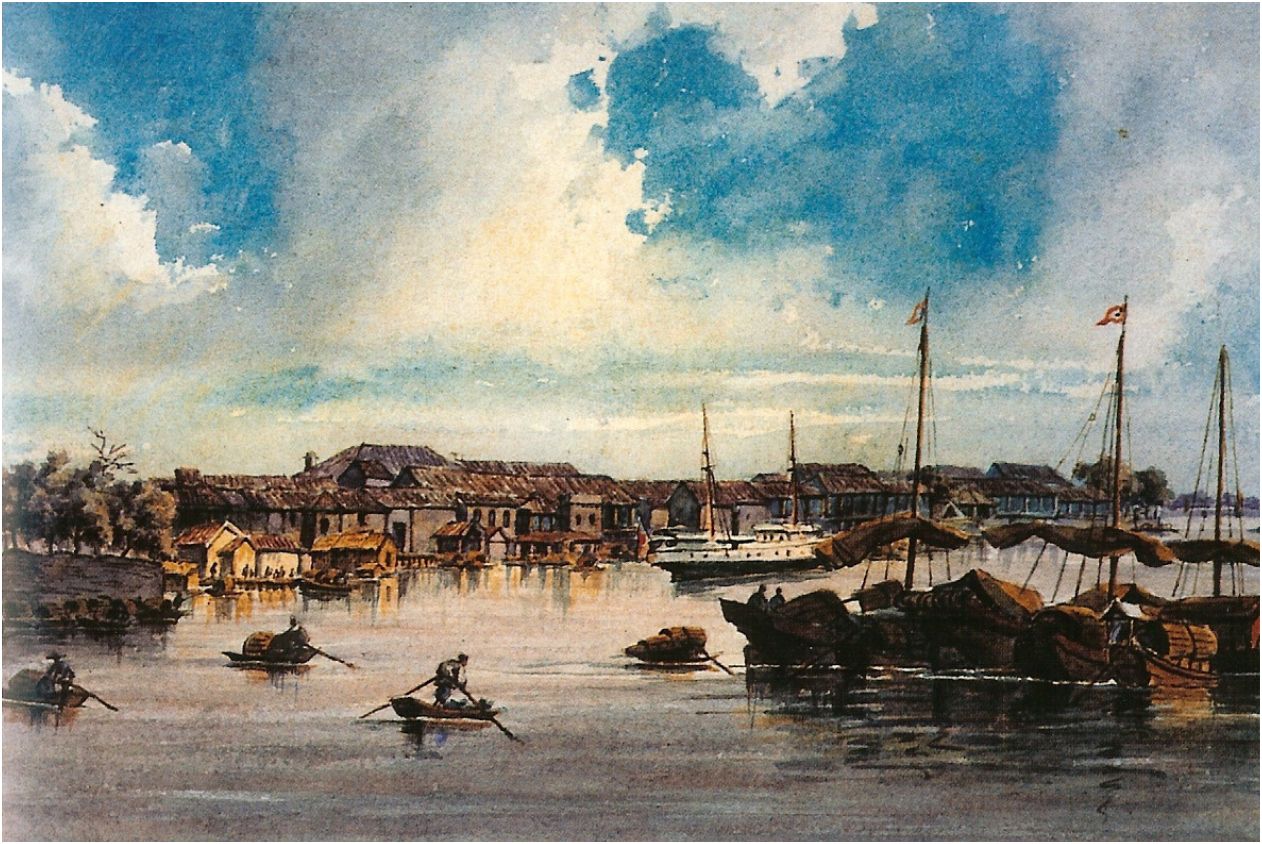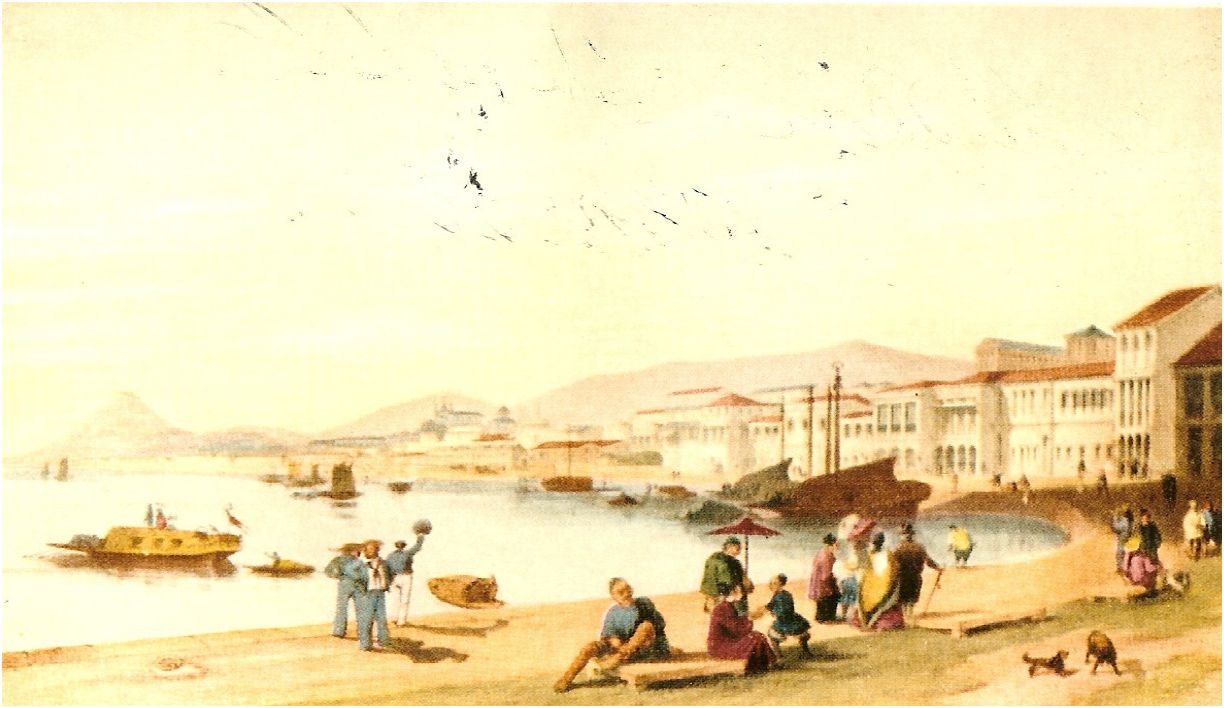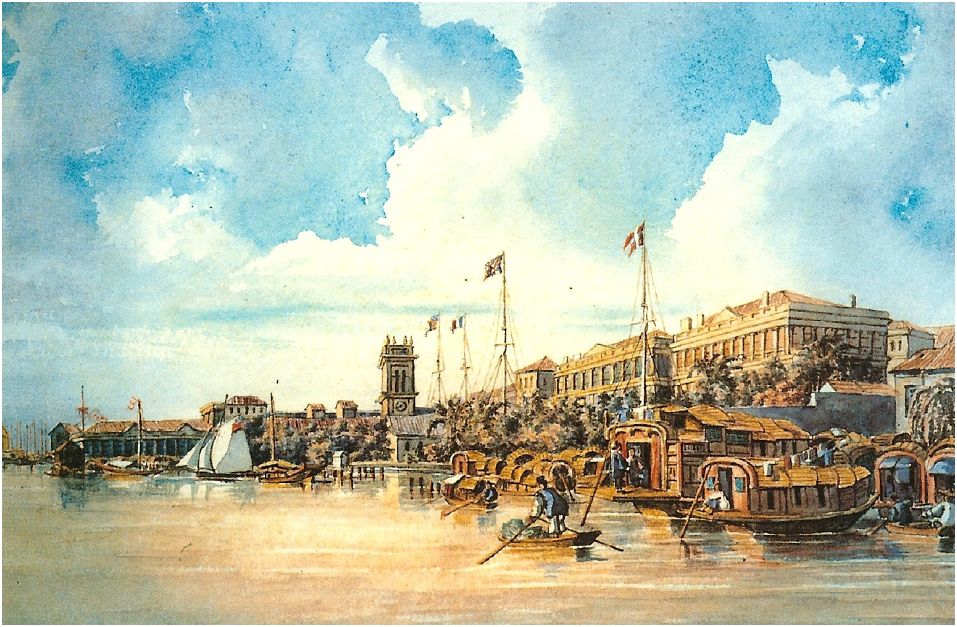Marciano Baptista
My great-grandfather Marciano A. BaptistaClick on the SEARCH icon and enter his ID number (35482) to be taken to his personal page is considered Macao's finest 19th Century painter, yet comparatively little is known about his life. He was born in Macau in 1826 and died in 1896 in Hongkong. In 1840s he began working for George Chinnery, the celebrated Irish painter in Macau who was then well advanced in years. He showed exceptional ability as a painter and Chinnery gave him lessons in water color painting.
The family recalls hearing that my great-grandfather's association with Chinnery began when, as a small boy, he tagged along with Chinnery in Macau and did odd jobs for the Irish painter in order to learn the trade. He achieved a high standard of excellence as a painter in water colors, and was known for the fine detail and coloring of his paintings. His early paintings resembled Chinnery's style but as he matured he began to develop a definite style of his own. His sketches of the little girl with the full Madonna-like face and carefully tied kerchief on the girl's head are as exact as Chinnery's – so is the girl's familiar graceful pose. Late in 1840s he married Miss Maria Josefa do RosarioClick on the SEARCH icon and enter her ID number (35483) to be taken to her personal page, daughter of Mr Joaquim do RosarioClick on the SEARCH icon and enter his ID number (35484) to be taken to his personal page, a clerk in the employ of the Hong Kong Government as an English-Chinese Interpreter in the courts.
My great-grandfather, Marciano Sr loved to paint and tried his skills on "A-Ma Temple", in Macao. He painted the temple from different angles; in fact, according to Martin Gregory, an art expert, his paintings of "A-Ma Temple" are most prized by collectors.
He made numerous sketches and paintings of the daily street scenes of Chinese engrossed in card games, relaxing on picnics and gathering of large groups, and many harbor views of Macau and Canton. There are two oil paintings of "Street Scenes" circa 1850, which he completed when he was 26 or 27 years old, and now on display at the Luis Camões Museum in Macau. My cousin Cecilia Alarcon Click on the SEARCH icon and enter her ID number (6174) to be taken to her personal pagehas a lovely collection of sketches by our great-grandfather in her album.
The most active period of his career was between 1850 and 1870. Mr JP BragaClick on the SEARCH icon and enter his ID number (14487) to be taken to his personal page, in his book The Portuguese in Hongkong and China, says "Marciano was a quiet and gentle in manner, ... always ready to help in any good cause." Mr. Baptista will best be remembered by old-timers of Hongkong for his splendid work in connection with theatrical shows produced by the Hongkong Amateur Dramatic Society, and in particular one of the Society's most brilliant successes, the pantomime Ali Baba and the Forty Thieves.
My great-grandfather took on the responsibility for redecorating the dome of the Theatre Royal in Hongkong every year until his death. Mr JP Braga, estimates that Marciano Sr painted approximately 90 to 100 paintings, mostly water colors. He also painted the ceiling and altar of Sto Antonio and São Lourenço churches. Below are some of his paintings in water color of life in Coastal China in the 1800's.
In 1895 he completed a large painting (10' X 6') in commemoration of the Royal Visit by the Duke of Edinburgh to Hongkong for Queen Victoria's diamond jubilee.
On 11 March 1896, about 3 weeks before his death, he completed an oil painting (24" X 16") of the "The Royal visit of HRH Prince Alfred, Duke of Edinburgh, aboard HMS Gallatin". Marciano Baptista Sr drew the scene from Bowen Road (mid-levels), Hongkong. This painting is now in the Board Room of Jardine Matheson & Company in Bermuda.
One painting in particular was very dear to Marciano' s heart, "A Scene of Canton", which was reclaimed by Marciano Sr after Chinnery's death.
The first Hong Kong reference to my great-grandfather appeared in the Letters to the Editor column of a Hongkong newspaper in early 1850's. The correspondent urged local people to patronize Baptista, a student of Chinnery, instead of the Chinese painters of the time who were doing similar harbor and street scenes.
In the mid-19th century there was a group of Chinese painters on Wellington Street, painting views of Hongkong to satisfy sea captains and other visitors with mementos of the Island. Some sources suggest that Marciano joined with these Chinese painters and credit him with being a sort of cultural ambassador, linking the Chinese artist with the European clientele.One stumbling block in compiling his works is his tendency not to sign his works. Perhaps modesty accounts for this practice but in a few cases it is possible to detect his initials. In the Hongkong City Hall's supply of his watercolors, only one has a signature -– here an untypical "M Baptista" has been scratched, perhaps with a pin, into the color.
Photography first trickled into the British Colony in 1860's and abruptly created competition for the scores of landscape painters earning a living on Wellington Street. Scores of photographic studios welcomed tourists who now could order their preferred harbor views by the number. Complete albums even were prepared so the tourist could take home remembrances of many Hongkong scenes, all ready mounted and captioned. After witnessing a French photographer take a picture of the fleet assembled in Hong Kong harbor, Marciano soon realized the potential of photography so he ordered photographic equipment from Europe and began to take pictures of Hong Kong everyday scenes. Many of these photographs may be seen in the pictorial section of the National Library of Australia in Canberra. After moving to Hong Kong and having a large family to provide for, my great-grandfather became an art teacher at a number of schools, including St. Joseph's (then known as St. Xavier's) to augment his income. He occasionally provided designs to be used as the basis for scenery for a London theatre show with a Hong Kong background.
A lawyer in Macau, Dr Silva MendesClick on the SEARCH icon and enter his ID number (18368) to be taken to his personal page, scrupulously collected his works and unearthed new material about Marciano Sr, which he published in several articles. He claims that Marciano's development was encouraged by Chinnery and even shared some of his secrets with the young artist.
Mr Henrique Nolasco da SilvaClick on the SEARCH icon and enter his ID number (1749) to be taken to his personal page paid HK$500 for 8 etchings from Marciano Sr (4 of Macau and 4 of Canton), but these etchings disappeared after World War II.
The first recorded appearance in an exhibition was in Macau in 1920 and subsequently occasional paintings of his have cropped up in exhibitions of "China Trade" paintings, illustrating life in the ports of southern China used by Westerners. Mr. Martyn Gregory a London Art dealer has a small album containing more then 30 sketches signed with Baptista' s name which appear to be genuine.
Macau's Camões Museum collection has 10 of his paintings, and this has formed a good foundation for his works. The Hongkong Museum of Art also has a small number of his paintings. Other Hong Kong collectors, including Mr. Peter J. Thompson also have about 20 of his paintings.
Below are some postcards created by Marciano Baptista Sr:His son Marciano Baptista JrClick on the SEARCH icon and enter his ID number (35490) to be taken to his personal page, my grandfather, opted for a more secure career as a clerk of Johnson, Stokes and Masters, however he also continued the Baptista artistic traditions and painted the portrait of his father Marciano Sr, which is now on display in the Luis Camões Museum in Macau.
Marciano Baptista Jr's son, also called Marciano III (Nanali)Click on the SEARCH icon and enter his ID number (31461) to be taken to his personal page, my uncle, was also an accomplished artist and became proficient in "Illuminating Manuscripts". He was commissioned to prepare an ornate scroll marking the coronation of King George VI and Queen Elizabeth in 1937. As a POW in the Sham Shui Po Camp, he designed all the scenes for the plays at camp. One ingenious scene featured a false radio. When the music blared forth, the Japanese guard looking on lurched forward, fearful that the men had built a real radio. He did not notice the small band behind the curtain and the female impersonator whose "make up" was artfully applied by Nanali. It sounded like a Bob Hope show. After the war, he was much sought out for his flair for designing "illuminated address and farewell presentation gifts", to retiring officials or other important persons requiring special artistic treatment. He was awarded an MBE for his military service.
Have a look at another magnificent watercolour by Marciano António Baptista – Ed.
